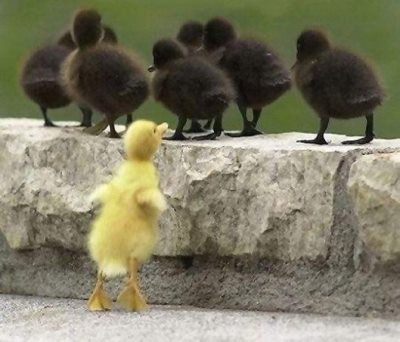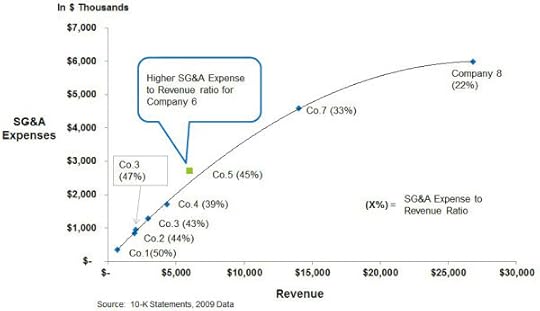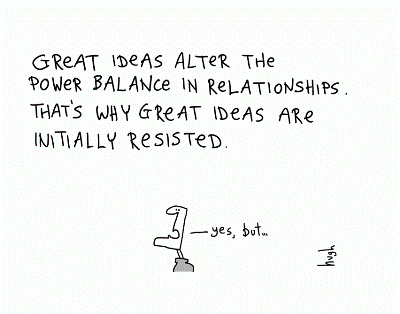Jeremie Averous's Blog, page 119
June 14, 2014
Why Feeling Burnt Out is Natural Part of the Creative Process
Sometimes I do feel kind of burnt out. Especially when I tried hard to push the confines of my comfort zone and it did not succeed as well as I would have expected (or dreamed). Or when I overextended myself believing I could do something but that is for the moment out-of-reach.
 Hugh MacLeod reminds us that “this stuff is NORMAL. No, it’s not easy, but hey, no truly interesting and meaningful life ever happened without a lot of this kind of ordeal. Trust me, we are the lucky ones. The unlucky ones are the ones who go their entire lives without ever feeling it.”
Hugh MacLeod reminds us that “this stuff is NORMAL. No, it’s not easy, but hey, no truly interesting and meaningful life ever happened without a lot of this kind of ordeal. Trust me, we are the lucky ones. The unlucky ones are the ones who go their entire lives without ever feeling it.”
Yeah, great. So let’s admit that is the natural outcome of stretching ourselves and that we should be grateful to be sometimes in this condition. The natural reflex is to hurry back to our comfort zone and seek all sorts of risk-minimizing strategies. That’s where the danger looms because it is when we might drop the ball for good.
It is where it is so important to benefit from the support of one’s family (so as to realize we are not alone) and to have as well some areas of life where we can dwell in a comfort zone to recharge our batteries. It is important to make sure that part of our life remains in our comfort zone because stretching it and being creative is well- tiring. And you just can’t do it all the time.
Image and quote by Hugh MacLeod (Gapingvoid.com)

June 12, 2014
Why you Should Seek Change Energy in Emotion – not in Analytics
“There is no energy in logic, only in emotion” – Dee Pinkard. I like how this quote reminds us that the root of e-motion is indeed motion as in moving. Emotions are actual states which move us – physically.
 The quote also reminds us that logic or analytic thinking in itself does not really produce movement. In particular if you want to foster some kind of change, or to bring people to take some kind of initiative, the only truthful way is to create emotions. Convincing through clever analytics very rarely creates any kind of subsequent action.
The quote also reminds us that logic or analytic thinking in itself does not really produce movement. In particular if you want to foster some kind of change, or to bring people to take some kind of initiative, the only truthful way is to create emotions. Convincing through clever analytics very rarely creates any kind of subsequent action.
As proven repeatedly by marketing experts, negative emotions do work powerfully when they deal with our fear of loss; positive emotions do work as well when it comes to sharing a compelling vision.
If you want something to move, you need to create emotions. Emotions are energies in motion. Release the energy – create emotions!

June 10, 2014
How the Fourth Revolution Reaches every Corner of the Planet
“A Masai warrior on a cellphone in the middle of Kenya has better access to knowledge than President Reagan did 25 years ago.” – Peter Diamandis.

Striking.
And does not need any comment!
Quote from the post “How the United States is reinventing itself yet again” on Washington Post.

June 7, 2014
Why You Should Try to Belong (and Not so much to Fit-In)
There is a distinct difference between fitting-in and belonging, and this changes completely how we deal with situations where we try to enter a group.
 “Fitting in and belonging are not the same thing, and, in fact, fitting in gets in the way of belonging. Fitting in is about assessing a situation and becoming who you need to be to be accepted. Belonging, on the other hand, doesn’t require us to change who we are; it requires us to be who we are.” – Brene Brown in ‘The Gifts of Imperfection‘.
“Fitting in and belonging are not the same thing, and, in fact, fitting in gets in the way of belonging. Fitting in is about assessing a situation and becoming who you need to be to be accepted. Belonging, on the other hand, doesn’t require us to change who we are; it requires us to be who we are.” – Brene Brown in ‘The Gifts of Imperfection‘.
According to Brene, belonging requires authenticity (and including acceptance of our imperfections) while fitting-in is an attempt to disguise ourselves to enter a group. The latter is obviously, on the long run, due to fail or at least put us in a quite uncomfortable position, which can sometimes lead to psychological consequences.
It is great to belong – although possibly difficult and rare. Do not try to fit-in at all costs believing that it is the same. It is not, and it is very uncomfortable. So right now, do you belong or do you fit-in?

June 5, 2014
How Collaborative Age Moguls are Taking Over Press Media
One of the most astonishing trends in the past few years and months is to see successful Collaborative Age entrepreneurs getting involved in the media business through investment in major newspapers and associated news outlets (while at the same time the newspaper industry revenues and profits are in severe decline with the advent of content marketing).
 Last August, Amazon’s Jeff Bezos bought the Washington Post. No-one is really sure why. In France, in 2010, Xavier Niel, probably the most visible internet entrepreneur in France, participated in the buying of Le Monde, a major newspaper, and seems to be currently looking forward buying another major media outlet.
Last August, Amazon’s Jeff Bezos bought the Washington Post. No-one is really sure why. In France, in 2010, Xavier Niel, probably the most visible internet entrepreneur in France, participated in the buying of Le Monde, a major newspaper, and seems to be currently looking forward buying another major media outlet.
Of course, billionaires buying newspapers is nothing new. It has always been a way to seek influence, and sometimes has served as a launch pad for a political career. As usual, the buyer swears that he will not influence the editorial line of the paper, but while that might be true on the short term, it will definitely influence it, broadly speaking, on the longer term.
Previous newspaper buyers and owners had more created their fortunes from mining, commerce or industry and the fact that internet-based company billionaires are in the game reflects their new prominence among the wealthy and powerful. Also, the positive side is that in the middle term this new ownership might change the viewpoint and stance of the press in a more positive view of Collaborative Age economy, and support the societal change that are required.
Indirectly, these investments are good for the business of these entrepreneurs as it will support the mindset change that is needed for society to embrace the Collaborative Age.

June 3, 2014
How Philanthropic Patronage Returns for Art and Science
This paper in the NY Times describes how ‘Billionaires With Big Ideas Are Privatizing American Science‘. This can also be put in perspective with what happens in the field of health and development, for example with the Gates foundation, which is privately funded. Roles that had been taken by Governments during the Industrial Age seem to be now shifting to private individuals.

A dedication by Monteverdi to his patron – Orfeo (17th Century) (source – Wikipedia)
Patronage is actually not new. In the previous Agricultural Age, artists and creators needed the protection and funding of high-ranking individuals to develop their art and develop their initiatives – it was the widespread concept of patronage. This is why most artistic production is dedicated to the patron. It is only during the Industrial Age that this role was taken over by Government, with the creation of massive public research institutions and other direct and indirect public support mechanisms to artistic endeavors.
As we enter the Collaborative Age the trend would seem to reverse again with high wealth individuals entering again the field of art and science fostering while Governments are wrestling with huge deficits and can’t afford to continue this protection and support.
Is this trend temporary or will it be a characteristic of the Collaborative Age? I believe that with the shift in value creation and the disappearance of middle class this trend is possibly here to stay. Of course this poses all sorts of questions about possible conflicts of interests. Still patronage in the Agricultural Age supported the production of many great artwork and scientific advance, there is no reason why that could not continue.
Artists, scientists, you might want to seek funding in patronage rather than in Industrial Age governmental institutions!

May 31, 2014
Don’t Underestimate How Easy it is to Start a Business Today
The cost and effort to start a business has dramatically floundered in the past few years with the advent of the Fourth Revolution. I believe this fact is still not fully understood by the mainstream. It could comes up to the point where even Venture Capital, which was so important to the development of new technology start-ups in the 1990′s, might not be so relevant today in the field of innovation.

A typical start-up business plan framework from ‘Business Plan Generation’
Some relevant stories and posts by Vivek Wadhwa include Beat the GMAT, a 32,000$ start-up that was valued millions in a few months, or this Quartz post ‘Anyone, anywhere can now build the next WhatsApp or Oculus‘.
With the advent of cloud services, it is very cheap to have a professional level infrastructure at your disposal almost immediately and for a few thousand dollars a year, as I am also experiencing with my own ventures. It is also very cheap to develop mobile applications, websites and other web-based software based on existing free, open source basis. The importance of strong financial backing is thus delayed in the development process of new start-ups to the point where they can demonstrate revenue and whether their business model could be viable.
This of course removes lots of excuses not to start following your insights and ideas and create value to the world!
For more insight into business models I strongly recommend the Business Model Generation book, a collaborative book that created a framework that is now used throughout the start-up business community.

May 29, 2014
How to Organize Working Space for Collaboration
Working space spatial organization is important when it comes to fostering collaboration. Many visionary entrepreneurs know this. And they came up with many different solutions.

World’s Largest Single Desk
Steve Jobs at Apple is famously quoted for his bathroom concept at Pixar (one single instance so as to make sure people mix). Employees at Valve can move their desks as they want/ need to create temporary clusters around projects. Recently, a creative agency in New York came up with a design for a single desk for their employees (it is worth watching the presentation video to fully understand the design!) – (beyond the publicity, one wonders whether is will really enhance collaboration)
More commonly, start-up companies often start cramped in a single room, and collaboration is as a requirement as simple rules of community living!. In the field I am consulting in, large projects, an integrated project team interacting in a single open-space is a must.
There is no single solution, but managers still often forget how the physical space can influence productivity and creativity. Review your office lay-out and make sure that it fits what you expect to happen within your organization!

May 27, 2014
Why the Percentage of Overhead (SG&A) is Larger for a Small Company
Recently I was negotiating a consulting contract with a client and the client came up with the argument that our price should be lowered compared to a large consulting company they were employing at the same time, because as a very small company, our overheads (sales, general & administrative costs – SG&A) should be lower. I was convinced on the contrary that due to the lack of scale factor, they are in fact higher (as a % of revenue).
We did not conclude the argument before the end of the negotiation but that got me thinking. I did a bit of research and what I found is indeed that as a general rule, SG&A diminish as a percentage of revenue when the size of the company increases, due to economies of scale, such as for example in this study of software companies:

SGA ratio to revenue depending on the size of the company
Would that also hold true of a very small company like my current company (2 employees)? My take is that it is certainly true even if is not necessarily clearly valued because I do spend a lot of my time on administrative and marketing stuff without being compensated for it (and without counting my hours). In addition, even in a time where it is easy and cheap to have the necessary infrastructure setup, the costs of using external contractors for such tasks as accounting, payroll etc is necessarily more expensive than having internal resources doing it internally – but the size does not justify a full time employee on these tasks yet.
It is thus clear that for very small companies, if it was fully valued, the percentage of SG&A effort is much higher than in even slightly larger companies, and much higher than very large companies even if they do use a small percentage of their revenue on activities such as research and studies.
In any case the debate was probably not relevant because what is important, is the going market rate for the services provided, amended by the value brought to the client organization, which needs always to be much higher than the cost of consultancy!

May 24, 2014
How Innovation Will Necessarily Alter the Power Balance
Following up on our previous post on why real disruptive innovation does have to change business models, this inspirational image from Hugh MacLeod is a great complement.
 Real good ideas do necessarily alter the power relationships (and that is why they are always resisted, but that is another story).
Real good ideas do necessarily alter the power relationships (and that is why they are always resisted, but that is another story).
Power relationships include those relationships in an organization’s hierarchy as well as those relationships in a market.
When I am facilitating, it is interesting to see how I can feel that the group stumbled upon a good idea – when someone starts feeling uneasy about this is going to change power relationships (and in general, his or her own power). Resistance starts to kick-in. It is a sure sign that we hit the nail on the head and that a good idea has been produced. It needs to be captured before it dilutes itself, and assessed to check whether it is just good, or whether it is great.
Image and inspiration by Hugh MacLeod at GapingVoid.com




